2012 How to Make almost Anything
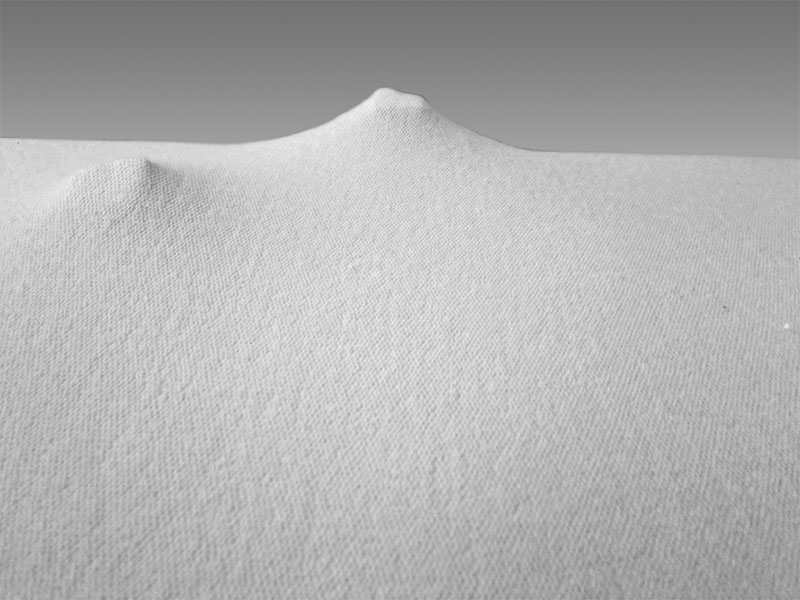

SYSTEMS IN MOTION

Here is the final music box with fabric stretched tightly over the surface. Along with .375 in plywood, this project also called for:
1/8" aluminum bar stock, copper fittings (to create bearings) small felxible springs, 5/16 threaded rod with nuts and washers, Nylon spacers for threaded rod, 3/4" wooden dowel, and small pins for the paddles(I used compnents found in screen doors)
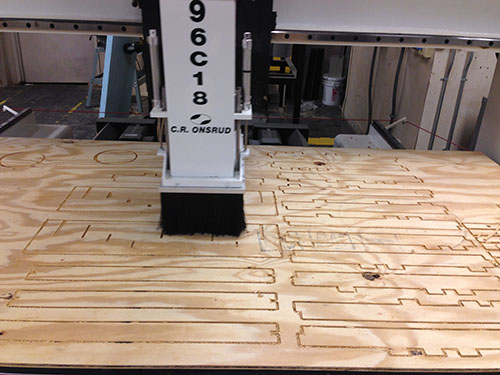
The CNC machine is necessary in cutting out the majority of the components in a precise way. Due to the moving parts, tolerances of fit are extremely important. The size of the music box was determined by the amount of material that could fit on 4 x 8 ft of material.
Ensure that the board is not warped before placing it on the bed. A warped board has the potential to ignore the vacuum on the bed, and slide during the cutting operation. It is also imporatant to have the machine remove completely any unwanted small parts, to ensure they do not move around during milling.
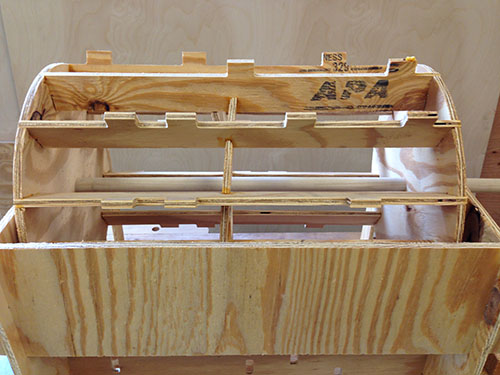
With all the pieces cut out, the drum can be assembled. Even with a tight tolerance of .005 the plywood still needed to be glued to ensure secure fit. The ribbed pieces do not stick furthur than the edge of the drum which allows for smooh rotation during operation.
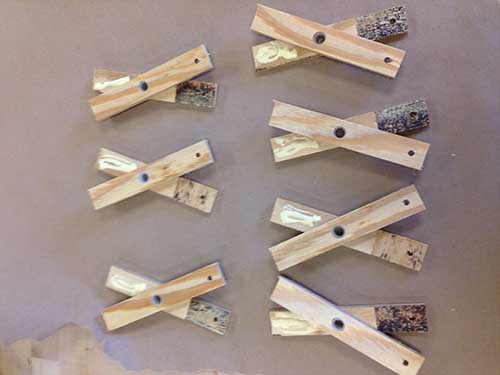
The paddles on the machine were going to receve the majority of the load, so I doubled them up for strength. This also allowed the aluminum lever arm to fit snugly inbetween the two. Each piece was surface milled 1/3 of the way through towards the bottom to make room for the aluminum bar stock.
The nylon spacers are necessary so the wooden hole does not snag on the threaded rod.

The prings are the first non wood element to be assembled. There tacked on with roof anchors, and line up with the nothces on the wooden wheel. without the springs the paddles would not return to position and the machine would not run. The taughtness of the spring is extremely important.
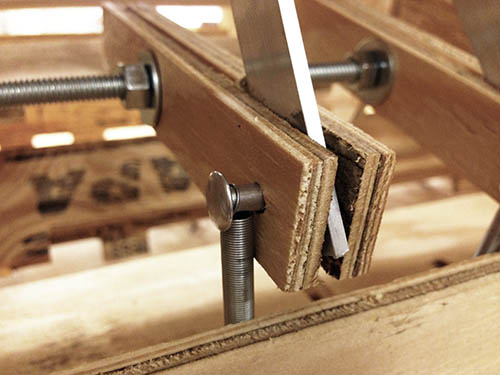
Detail of paddle assembly showing position of lever arm and attachment method of spring to paddle. The pins I used to fix the lever to the paddle happened to be the radius at the end of the spring. It was a lucky coincidence and one that saved me testing, and machine time.
The nuts that hold the paddles in place eventually vibrate loose from operation of the machine. Adding double bolts would ensure that this would not happen in the future. Now my music box needs constant "tuning."
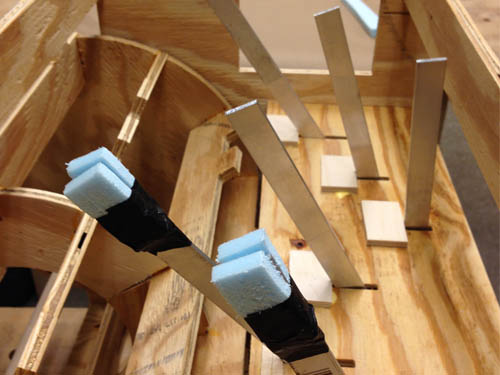
The aluminum as too sharp to be a good point of contact for the fabric. Foam inserts were added to soften the impact of the levers and to too ensure that they did not snag on the fibers. A point of experimentation would be the effect of different size and shape covers have on the smoothness of the fabric.
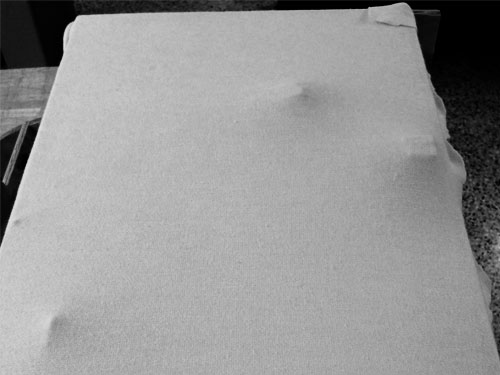
The intensity of which the fabric is pushed is a direct correlation with the lever arm angle. The steeper the angle, the less intense the impact is. The scattering of these angles atempts at moving beyond traditional scales and into more emergent spatial undersatinding of sound.
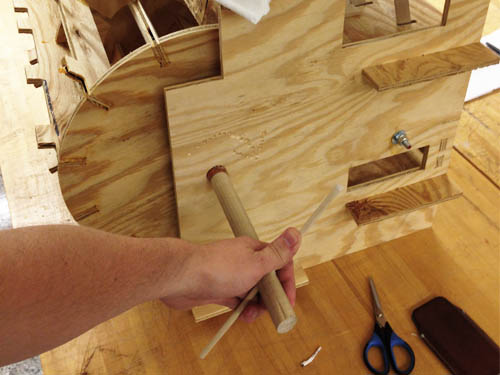
The handle was an attempt at making the turning of the mechanism more smooth. The follow up solution would be a small gear assembly that could ensure nice even turns.
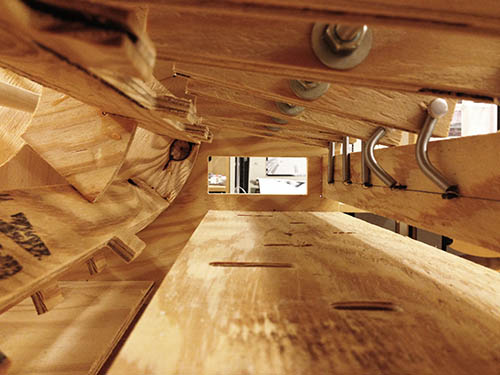
The major shortcoming with this project, but also its visual strength, is that the output image in the fabric relies on a direct coneection bewteen the ribbed drum and the lever arm. A more revelaing music box would be able to interpret sound less directly and with more emergent conditions of change.